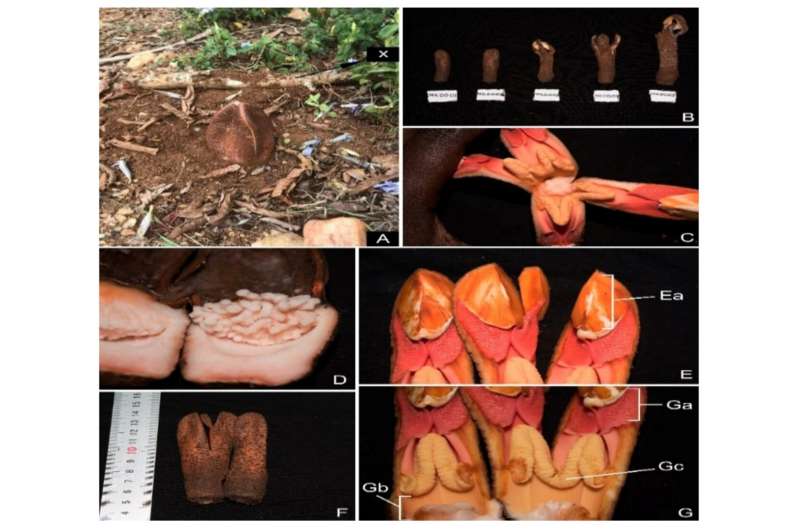Current summary of ethnobotanical uses, chemistry, pharmacology, and distribution of Hydnora species

The genus Hydnora, one of the basal angiosperms, is indigenous to Africa, Madagascar and the Arabian Peninsula. It consists of eight species: seven in Africa and one in the Arabian Peninsula. Notably, Hydnora abyssinica A.Br. (Fig. 1) and Hydnora africana Thunb. are widely distributed compared to other species. Despite the Hydnora species being practiced in ancient folkloric medicine, their traditional uses and pharmacological value are poorly documented.
Researchers from the Eastern African Plant Flora and Taxonomy Research Group of the Wuhan Botanical Garden summarized the up-to-date ethnobotanical uses, chemistry, pharmacology, and distribution of the Hydnora species, and pointed out possible research gaps.
According to the researchers, the distribution of Hydnora species is closely related to the host plant, the distribution range is increasing due to their apparent host. However, the variation of host dependency of these species to their host plants has not been revealed.
Hydnora species were found to have ethnobotanical and other usages. Hydnora plants are a source of food for wild animals, particularly fruits. Dried roots are used for charcoal preparation and tanning leather in Sudan. Moreover, it is used to treat various diseases when combined with other medicinal plants such as paralysis, diabetes, fever, insomnia, hypertension and so on. Furthermore, since it is rich in tannins, it has also been used as an astringent traditional medicine to treat diarrhea.
Understanding the phytochemical composition and content of Hydnora species is necessary to substantiate their ethnopharmacological uses. H. abyssinica is the only species that has been widely explored in this genus. Only a few compounds of pharmacological importance have been characterized in H. abyssinica using gas chromatography-mass spectrometry.
Hydnora species are ascribed with good antibacterial and antioxidant activities as shown by various experiments. The antioxidant reducing potential depicted by this species can be wholly or partially linked with the high content of phenols, flavonoids, and tannins that were earlier reported in these species.
In addition, the genus has antiproliferative activity and has potential in the treatment of cancer. A previous study indicated that H. abyssinica was used together with other medicinal plants to increase its efficacy in curing several ailments. For example, when mixed with Justicia exigua S. Moore leaves, it is used to cure paralysis. When combined with Passiflora edulis Sims leaves, it is used to treat hemorrhoids. However, the clinical application of these combinations has not been confirmed.
Additionally, the pharmacological action mechanisms underlying the synergistic effects of these species and their medicinal material applications are yet to be explored.
The results of the study, titled "Understanding the Ethnobotany, Chemistry, Pharmacology, and Distribution of Genus Hydnora (Aristolochiaceae)", were recently published in Plants.
More information: Elijah Mbandi Mkala et al, Understanding the Ethnobotany, Chemistry, Pharmacology, and Distribution of Genus Hydnora (Aristolochiaceae), Plants (2021). DOI: 10.3390/plants10030494
Provided by Chinese Academy of Sciences




















